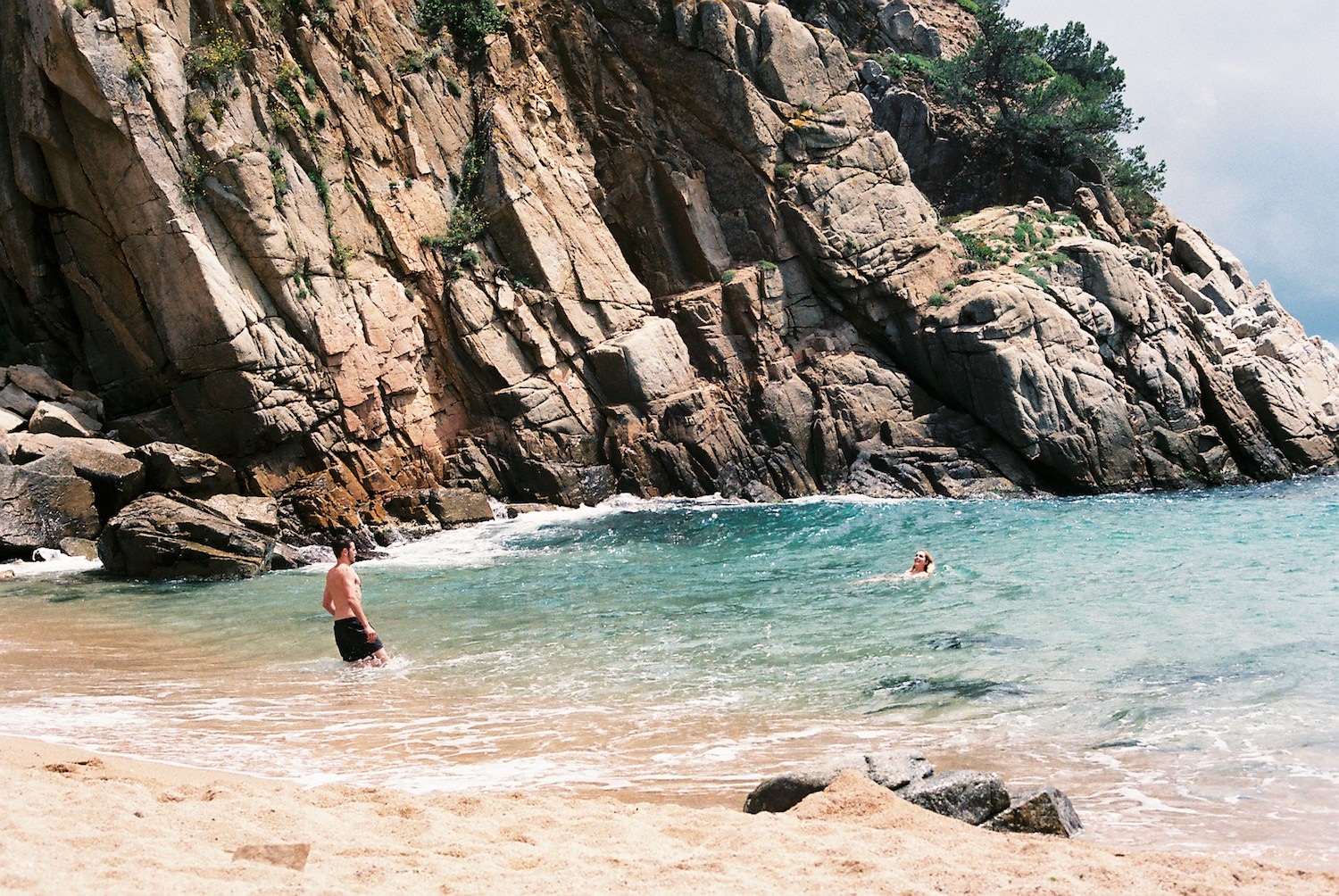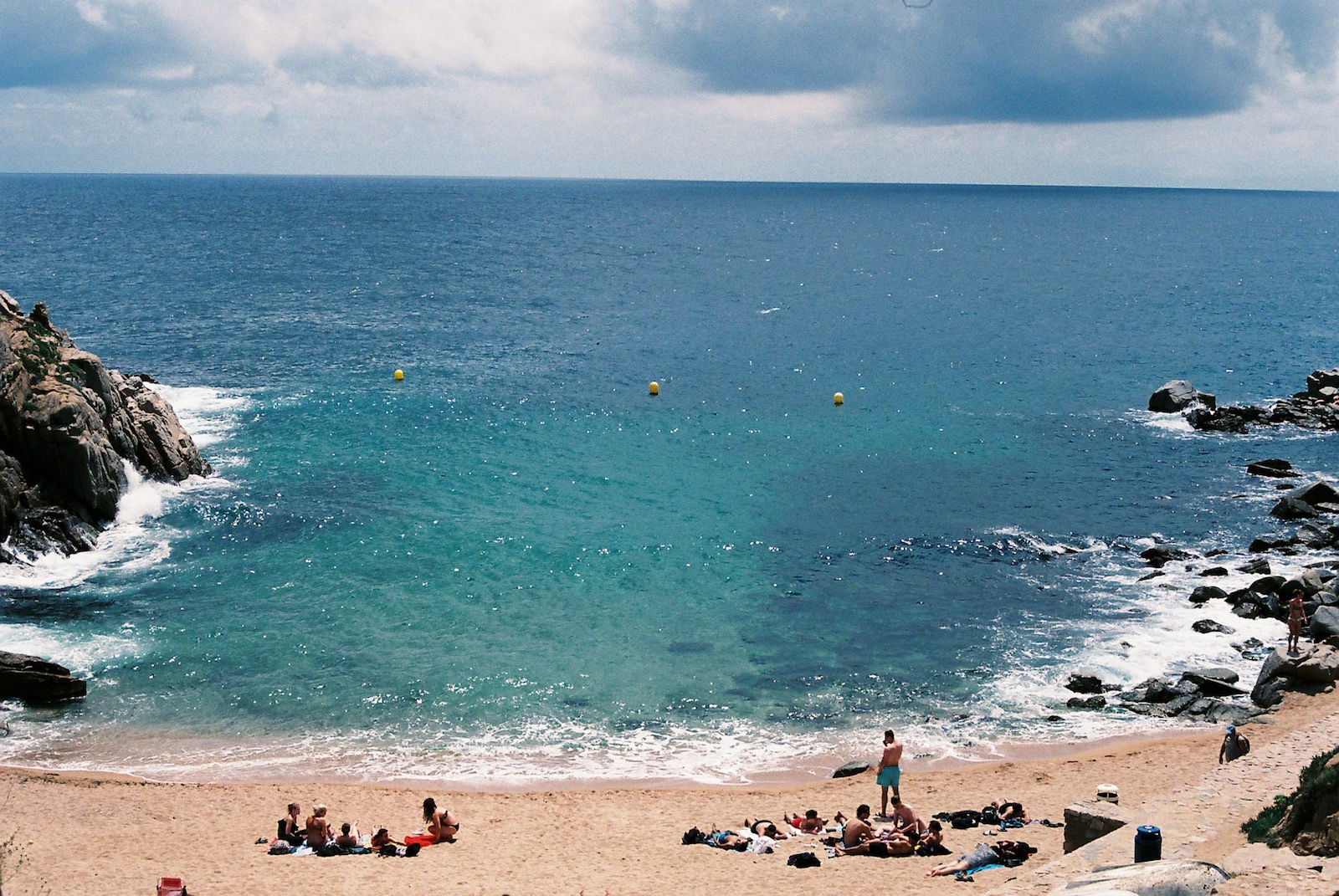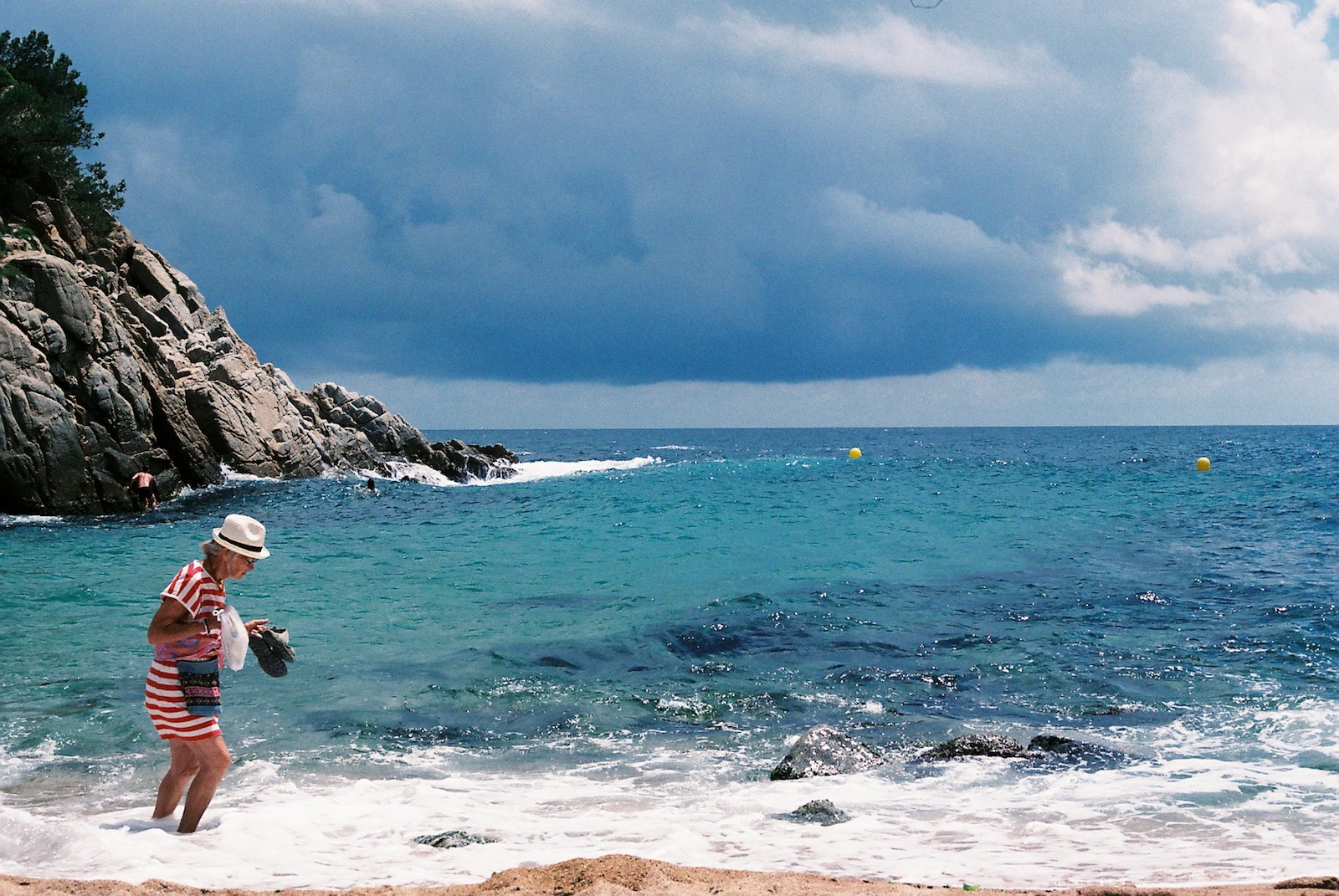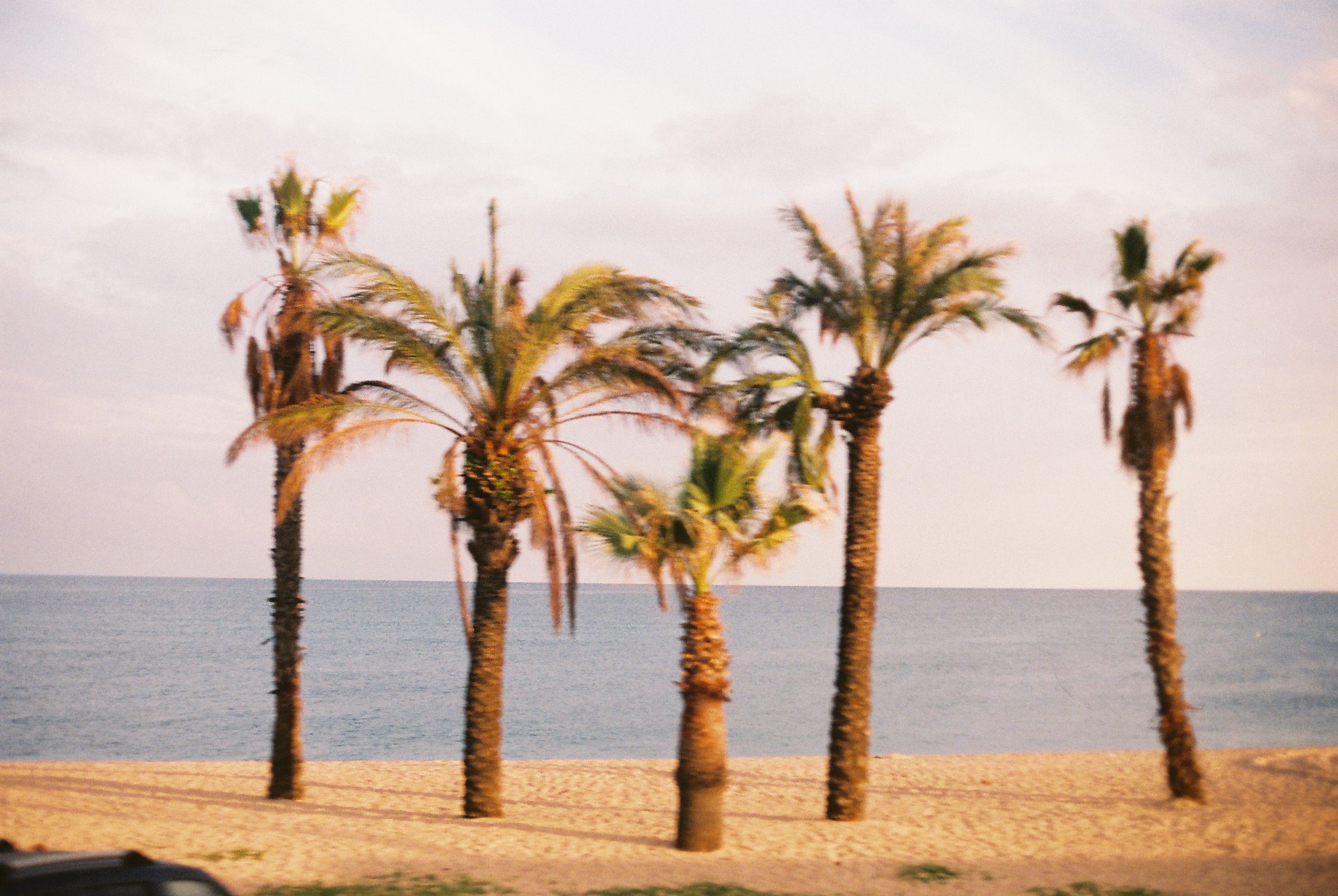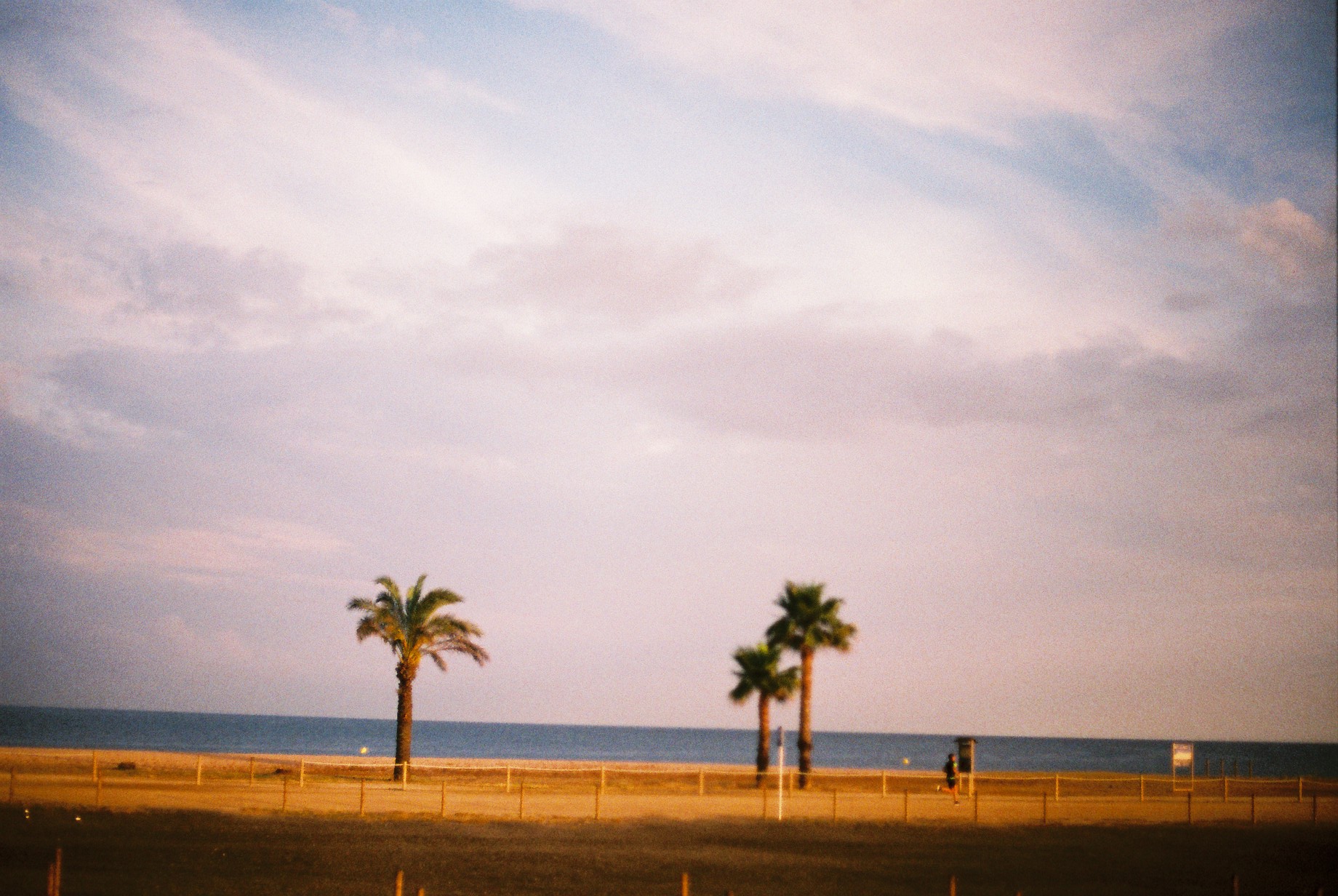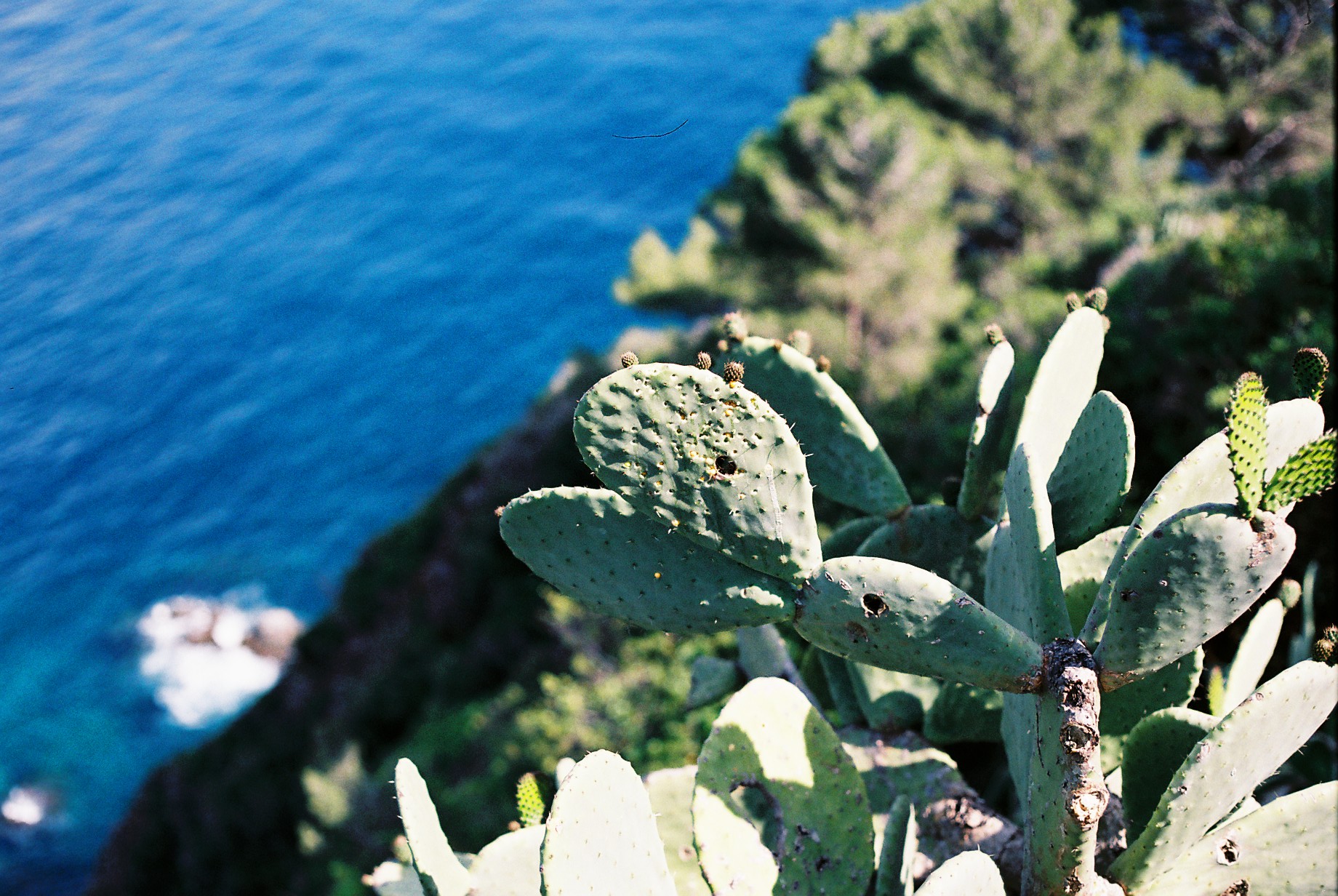バルセロナ滞在中、時間に余裕があれば、是非《トッサデマール》を訪れてみてほしい。トッサデマールは、まるで絵画のように風光明媚な海沿いの城下町で、古き良きスペインとカタルーニャ地方の魅力を感じることができる。トッサデマールは地元住民の間で「ワイルド・コースト」として知られ、スペイン北東部からフランス国境までを結ぶ、コスタ・ブラバに位置している。
トッサデマールは、バルセロナとフランス国境のほぼ中間地点にある小さな海岸都市であるため、何世紀にもわたって両地域の影響を大きく受けてきた。ゆったりとしたスペインのおもてなしの精神と、フランスの洗練された感覚が相まって、街中に浸透している。崩れかけた城の塔、そして滑らかな石畳の通りが織りなす精巧な道路網にいたるまでだ。歴史や文化、太陽と砂、そして素晴らしい波に恵まれたトッサデマールは、独特でありながらどこか懐かしく、その魅力が尽きることはない。
- Photos by Lucy Dayman
- Photos by Lucy Dayman
- Photos by Lucy Dayman
歴史
トッサデマールの歴史を振り返ると、新石器時代には人が生活していたと思われる痕跡が発見されている。その後、紀元前4世紀から紀元前1世紀までイベリア人の集落があり、1世紀にはローマ人が暮らしていたと考えられている。
12世紀には、中世建築が城壁に囲まれ、今我々が目にしているトッサデマールの建築的側面が発展を始めた。数百年後の1500年代には都市の住宅建築が急増している。人口増加による住宅の需要に対応するため、「エクストラ・ムール(extra-murs)」として知られるアパートスタイルの住宅が城壁の内外に建てられた。これらの堅牢なヴィラや小さな家々が互いにひしめき合いながら、今も比較的手つかずのまま(少なくとも外観的には)残っている。
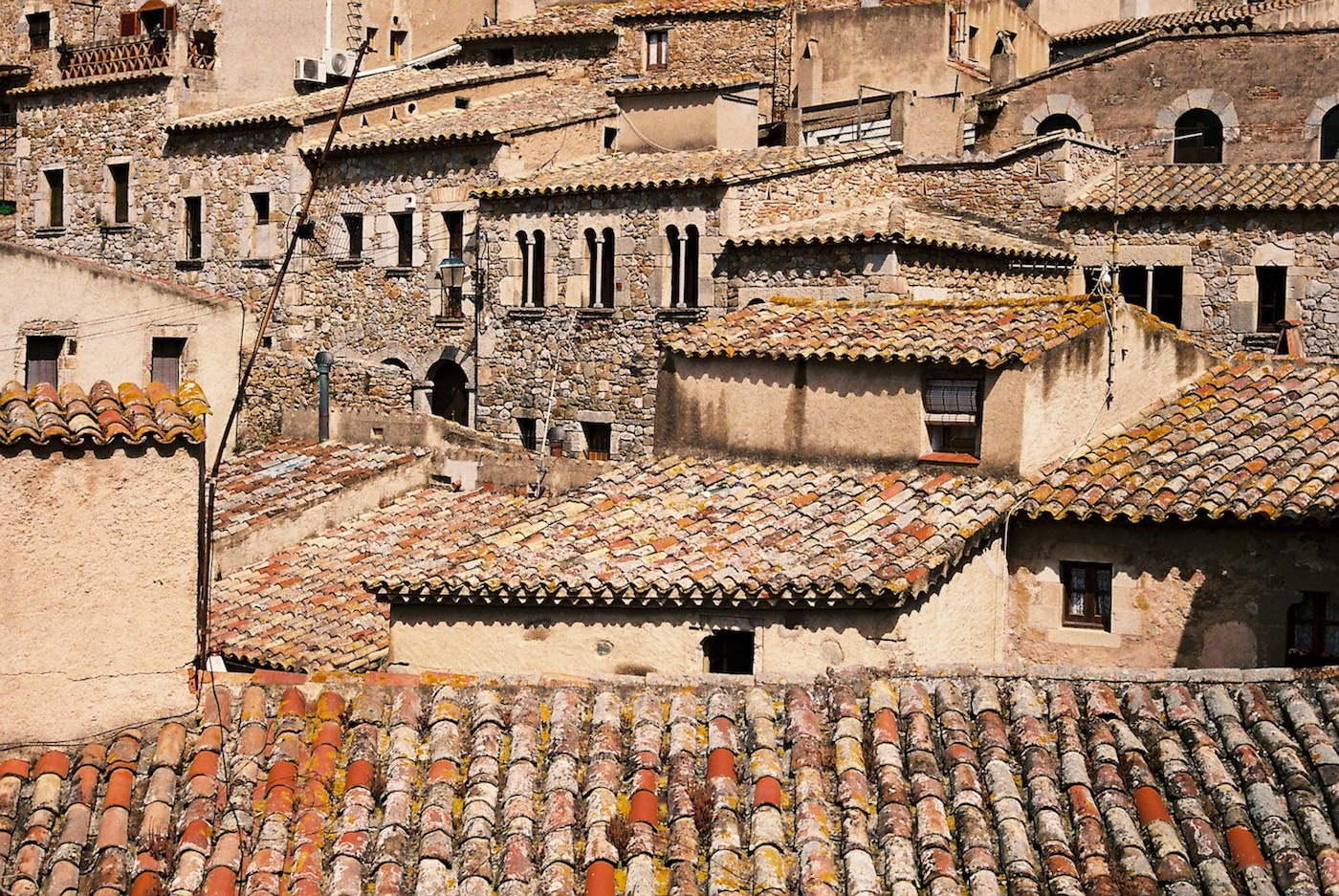
1500年代に造られたとされる「エクストラ・ムール(extra-murs)」。城壁の内外に建てられた堅牢なヴィラや小さな家々が互いにひしめき合う姿が今も残る。| Photos by Lucy Dayman
1950年代に入ると、街は再び変貌する。このころ、同地はバルセロナや、より広範なヨーロッパの知識人や芸術家コミュニティにとっての安息の地であった。芸術がもたらされたことから、街に大勢の観光客が訪れるようになった。ただ非常に幸いだったのは、この町が目先の観光収入による影響に負けず、大規模な開発という誘惑に断固として屈することなく、文化的および歴史的なアイデンティティに忠実にあり続けたということだ。だからこそ、今海岸を見渡しても、超高層マンションなど見当たらないのだ。
中世の騎士が紋章を誇示するように、豊かな歴史的ルーツを誇らしげに掲げているものの、トッサデマールは社会的に進歩したコミュニティでもある。1989年、この街は世界に先駆けて、倫理的理由から「アンチ闘牛都市」であることを宣言した。スペインの観光を支えるイベントであったため、町にとって闘牛に反対することは非常に難しいことだった。

楽しみ方
スペインでは食事を楽しみたい、あるいは歴史や気候を堪能したい、と考えている方、また単にビーチの雰囲気を味わいたい、という方もいるだろうが、トッサデマールはそれらすべてを叶えてくれる場所だ。何らかの方法でスペインの最高の要素を抽出し、壁に囲まれた地に集めたようだ。
ビーチなら、主な見どころは2つある。両者は気軽に徒歩で行き来できる場所にある。そのうちの1つ、プラヤ・グラン・トッサデマール(Platja Gran Tossa de Mar)は長さ約380m、幅60mの「ビッグビーチ」として知られている。中世の城に囲まれ、あちこちにボートが浮かぶ湾を海側から見ると、素晴らしい景観を楽しむことができる。
- Photos by Lucy Dayman
- Photos by Lucy Dayman
- Photos by Lucy Dayman
規模としてはやや小さめながら、実のところ景色の美しさで言えば、ラ・マール・メヌダ(La Mar Menuda)の方に軍配が上がるかもしれない。小さな入り江のような浜は、中世の街並みを囲む石壁と、そそり立つ岩だらけの断崖に囲まれている。手つかずの自然が比較的多く残るラ・マール・メヌダは、シュノーケリングやスキューバダイビングといったスポーツに最適だ。北風も届きにくい位置にある。
町はコスタ・ブラバで人気の海辺のハイキングコース、「カミーノ・デ・ロンダ」に位置しているので、脚に覚えのある人は是非挑戦してみてほしい。景観を楽しむには最高だ。ただ、もう少しゆったりと歩きたいという方向けのウォーキングスポットも、町にはいくつもある。ギザギザした地形の崖に沿って織り成すコースはいずれも素晴らしいものだ。ハイキングを楽しみたいという方は、まず旅行者向けのインフォメーション・センターに足を運んでみよう。ガイドツアーの申し込みや、ツアーの詳細についての情報を得ることができる。
中心街の真ん中にあるのが、ひときわ人目を惹くサン・ビセンク教区教会だ。このネオクラシカル風の教会は、1755年に建築された。その美しさは外観よりも、中に入ってみるとよくわかる。この教会は建築として素晴らしく、明るく、荘厳だ。内部の壁は天井に向かってカーブを描き、エレガントなドームのような屋根を作り上げている。何世紀にもわたり、大切に飾られ、几帳面に手入れされている。同教会では開放的なイデオロギーから、年間を通して、あらゆる層の訪問者を歓迎している。
行き方
バルセロナからは、バルセロナ空港またはバルセロナ・エスタシオ・デル・ノールからトッサデマール行きのバスに乗車する。所要時間は約1時間20分だ。より道中の景観を楽しみたいのであれば、海沿いを走るR1列車に乗ってブラナスまで行き、それからトッサデマール行きのバスに乗り換えるといい。この場合、所要時間は約2時間になるが、景色はプライスレスだ。車なら、バルセロナからC32か高速道路AP7で一直線だ。
- Photos by Lucy Dayman
- Photos by Lucy Dayman
- Photos by Lucy Dayman
—
Lucy Dayman | ルーシー・デイマン
オーストラリア生まれ。2016年、オーストラリア・メルボルンでのカルチャー・音楽雑誌の編集の仕事を辞め、日本で旅をしながら仕事を始める。フリーランスライターとしての仕事と旅の傍ら、フィルム写真を撮影している。
Instagram: @lucy.dayman.
HP: lucydayman.com
If you find yourself in Barcelona and have a little time to spare make a trip to Tossa de Mar, a picture-perfect coastal castle town and the embodiment of old Spanish/Catalonian charm. You’ll find Tossa de Mar positioned on the Costa Brava, known as the ‘Wild Coast’ to the locals the Coasta Brava tears along the northeastern corner of Spain, connecting to the the French border.
Its location; almost at the halfway point between Barcelona and the French border has for centuries has played a large impact on the influence of the small beachside city. A combination of laid-back Spanish hospitality a sense of French refinement permeates every inch of the city, from the raw, crumbling castle towers to the elaborate network of smooth cobblestone streets. History, culture, sun, sand, and incredible surf, Tossa de Mar is equal parts unique and familiar and always endlessly fascinating.
History
It’s believed that the first evidence of settlements on Tossa de Mar can be traced all the way back to the Neolithic Period, followed by Iberian settlements in 4th-1st century BC and the Romans in the 1st century.
In the 12th Century, the architectural side of Tossa de Mar we see today started to evolve as the medieval structures of the town were walled off, then a few hundred years later, in the 1500s the residential side of the city exploded, with apartment style housing known as ‘extra-murs’ being built in and around the area to help meet the demands of the population boom. Many of these robust villas and small houses stacked atop one another still stand relatively untouched (at lease from the exterior) to this day.
The arrival of the 1950s saw the city transform once again, this time to become a haven for many of Barcelona and wider Europe’s intellectual and artistic communities. With the arrival of such figures, the city faced an influx of tourists. However quite luckily the city didn’t succumb to the influence of quick tourism cash, stubbornly pushing back against the temptations to develop extensively, staying true to its cultural and historic identity which is why still today you won’t find mega high rise apartments overlooking the bay.
Although the city proudly displays its richly historic roots like a medieval knight would brandish his coat of arms, Tossa de Mar is a socially progressive community. In 1989 the city was the very first in the world to declare itself an anti-bullfighting city for ethical reasons, a massive coy for a town for which much of the nation’s tourism was build on such an event.
What to do
Whether you’re in Spain for the food, the history, the climate or just simply to enjoy the laid back beach atmosphere, Tossa de Mar has it all, almost like it’s somehow managed to distil the best bits of Spain into one well confined, walled off space.
For beaches, there are two main points of interest, both within a casual walk from one another. Platja Gran Tossa de Mar (Playa Grande) is known as the ‘big beach,’ stretching about 380 metres long by 60 metres wide, this boat-dotted bay is enclosed by the town’s medieval castle making for some pretty incredible views from the water.
A slightly more humble offering, La Mar Menuda may actually be the more picturesque of the two beaches. It’s a small little cove-like bay backdropped by the rocky walls of the medieval town and the towering rocky cliffs on which the town was built. With its slightly more untamed beauty, La Mar Menuda is an excellent sport for snorkelling, scuba diving and is protected from the northerly winds.
The town is positioned on the Costa Brava’s popular coastal hiking trail Camino de Ronda, which if you’re serious is well worth considering and an excellent way to see sights. However the town is dotted with more relaxed walking spots that weave their way along the area’s jagged cliffs and are equally as stunning. The best place to begin your hike is a with a visit to the Tourist Information Centre, there you can sign up for a guided tour of pick up a little info on what’s on offer.
Right in the middle of what could be considered the town centre is where the attention-commanding Parish Church of Sant Vicenc stands. This neo-classical style church was built in 1755. Although it doesn’t seem like much from the outside, inside is where its beauty is hidden. The church is an architectural wonder, luminous and regal, the interior walls curve together at the top to create an elegant dome like roof that has been carefully decorated and meticulously cared for throughout the centuries. With an open-door ideology, the church welcomes visitors of all walks of life almost every single day of the year.
How to get there
From Barcelona, you can catch a bus from Barcelona Airport or Barcelona Estacio del Nord direct to Tossa de Mar, the journey takes about an hour and 20 minutes. For a more picturesque journey you can always catch the R1 train which runs along the coast to Blanes and then switch to a bus to Tossa de Mar, this trek takes about two hours, but the view is priceless. By car from Barcelona it’s very straightforward, head down either the C32 or the AP7 motorway.
—
All photos by Lucy Dayman
—
Lucy Dayman
Originally from Australia, in 2016 Lucy left her job as an editor of a culture and music magazine in Melbourne to live, work and travel in Japan. Between freelance writing and traveling, she’s been dabbling in film some very amateur film photography, which you can check out on her Instagram: @lucy.dayman. Check out her other writing work and photos at lucydayman.com
